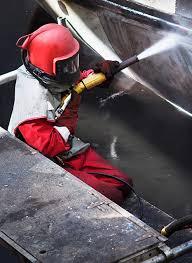How Dry Ice Blasting Enhances Industrial Productivity
In fast-paced industrial environments, efficiency and uptime are crucial. Equipment must be maintained without causing long delays or risking damage during cleaning. Traditional cleaning methods like sandblasting, water jets, and chemical applications often require machine shutdowns, surface repairs, and extended cleanup. Dry ice blasting, however, offers a smarter, faster, and safer way to handle industrial cleaning while actively supporting productivity.
This innovative technique removes dirt, oil, coatings, and other unwanted materials from surfaces without the need for water, chemicals, or abrasive force. The result is cleaner equipment, minimal downtime, and longer-lasting assets.
What Is Dry Ice Blasting?
Dry ice blasting is a cleaning process that uses compressed air to propel dry ice pellets—solid carbon dioxide—toward a contaminated surface. The dry ice impacts the surface at high speed and cleans it through a combination of physical force, extreme cold, and rapid gas expansion.
When the pellets strike the target, they cause dirt and buildup to fracture and loosen. Because dry ice is extremely cold, it also creates a thermal shock that weakens the bond between the contaminant and the surface. Then, as the dry ice sublimates—changing directly from solid to gas—it lifts away the loosened particles.
There is no residue, moisture, or grit left behind. This makes it suitable for use on delicate machinery, electrical components, and sensitive materials.
Faster Cleaning With Minimal Downtime
One of the key reasons dry ice blasting boosts productivity is its ability to clean equipment without the need to shut it down or dismantle it. In many industrial applications, machines can be cleaned while still assembled and even while warm.
This greatly reduces downtime during maintenance operations. Instead of hours or days of preparation, teardown, and reassembly, cleaning can often be completed in a fraction of the time. Production resumes sooner, and critical schedules are less likely to be disrupted.
In facilities that run 24/7 operations—such as food processing, packaging, or energy production—this speed advantage is a significant productivity gain.
Applications Across Industrial Sectors
Dry ice blasting is used in a wide range of industries due to its adaptability and effectiveness.
In the manufacturing sector, it cleans machinery, molds, and tools without wearing them down. In automotive and aerospace, it removes grease, adhesives, and paint from components without affecting precision parts.
Food and beverage producers rely on dry ice blasting to clean production lines, conveyor systems, ovens, and packaging areas without introducing moisture or contaminants. Because the process is dry and non-toxic, it meets strict hygiene regulations.
Electrical maintenance teams use it to clean control panels, motors, and circuit boards without risking short circuits or moisture damage. Even in power plants, turbines and transformers can be cleaned safely and efficiently using this method.
Reducing Wear and Extending Equipment Life
Traditional abrasive methods can damage or weaken surfaces over time. Sandblasting, for example, strips away protective coatings or alters surface textures. Chemicals may corrode metal parts or degrade rubber seals. High-pressure water can cause rust or electrical failures.
Dry ice blasting, by contrast, is non-abrasive and non-conductive. It does not scratch, etch, or erode the material being cleaned. This helps preserve the condition of expensive machinery, tools, and surfaces, extending their lifespan and reducing repair or replacement costs.
This level of preservation leads to fewer interruptions in production due to equipment failure, another factor that contributes to overall productivity.
Safe and Environmentally Friendly
Dry ice blasting is not only effective but also safe for both workers and the environment. The CO₂ used is typically reclaimed from other industrial processes, meaning it does not increase greenhouse gas levels. There are no chemicals, solvents, or hazardous substances involved.
Because it produces no secondary waste, there’s no need for disposal of spent media like sand or water runoff. This cuts down on post-cleaning labor and the use of containment systems.
Workplace safety is also improved, as workers aren’t exposed to harmful fumes or hazardous cleaning agents. With proper ventilation and protective gear, the process is clean and straightforward.
Cost Considerations and ROI
Although dry ice blasting equipment can be more expensive initially, the long-term savings often outweigh the cost. Reduced downtime, longer equipment life, lower waste handling costs, and faster cleaning cycles all contribute to a strong return on investment.
For companies that only need occasional service, hiring a professional dry ice blasting provider is a common and cost-effective option. This allows businesses to enjoy the benefits without committing to the equipment investment upfront.
Conclusion
Dry ice blasting is reshaping how industrial facilities approach cleaning and maintenance. Its ability to clean without causing damage, shut down operations, or create waste helps improve overall productivity.
By reducing downtime, preserving equipment, and delivering fast, effective results, dry ice blasting supports the core goal of every industrial operation: to stay running smoothly, safely, and efficiently.

